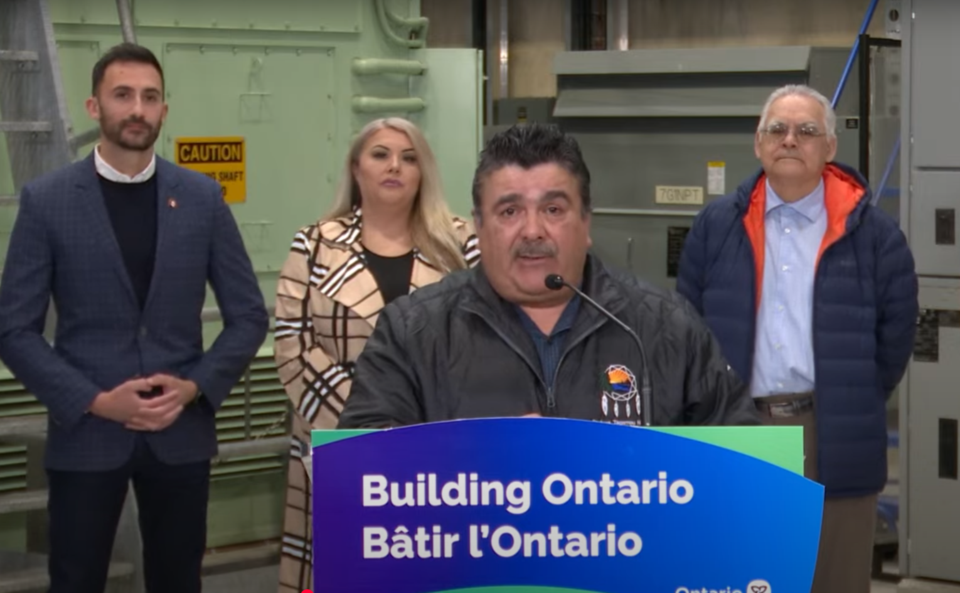To Taykwa Tagamou Nation (TTN) Chief Bruce Archibald, Indigenous involvement in the selection process of two proposed hydroelectric projects in the Moose River basin is what economic reconciliation should look like.
Archibald spoke at an April 9 news conference at the Sandy Falls Generating Station, outside Timmins, to reveal a pair of new power stations that will be added to Ontario Power Generation’s power-producing fleet in the coming years.
The event was livestreamed on YouTube.
TTN and Moose Cree First Nation are part of a co-planning committee with Ontario Power Generation and the provincial government to explore areas in the northeast that are suitable sites for future hydroelectric development.
The proposed projects mentioned in the news conference are the Nine Mile Rapids Generation Station on the Abitibi River, north of the Otter Rapids Generating Station, and the Grand Rapids Generation Station on the Mattagami River, north of the Kipling Generating Station.
Collectively, these two hydro stations in the Cochrane District could generate up to 430 megawatts of energy for the provincial grid, enough to power 430,000 homes.
“Economic reconciliation means we lead, not just to participate; it means that our voices and priorities are heard and respected at each and every stage of this process,” remarked Archibald.
A First Nation-led hydroelectric facility planning process represents an opportunity to Ontario to “walk the walk on nation-to-nation collaboration” to reach Ontario’s energy and infrastructure goals, Archibald said.
“This is an opportunity for us to showcase that new, large-scale projects can be built on time an on budget when First Nations are involved and have a seat at the table from the beginning.”
The two identified sites will be the the subject of more study and planning work, he said, before any approvals are granted.
Though no project price tags and construction timelines were revealed, the province said in a news release that these projects will be the first new net-generating power stations in a decade, beyond the refurbishment and expansion of existing stations in Northern Ontario, eastern Ontario and the Niagara peninsula.
These proposals are part of a $4.7-billion spending program to upgrade facilities and add more power capacity to secure more than 5,000 megawatts of clean energy and support 2,000 jobs.
Energy and Mines Minister Stephen Lecce said Northern Ontario needs 81 per cent more power by 2050 to accommodate the growth in this region, according to Ontario’s Independent Electricity System Operator, as well as the need to add and situate more power-generating capacity closer to the source of demand.
Partnerships with First Nations help “drive the bus” in delivering more clean, reliable and affordable energy while realizing local economic development and reconciliation, Lecce said.
Northern Economic Development Minister George Pirie, a former mining executive, said mining and energy go hand in glove.
”Nothing can be developed without energy,” said Pirie, noting that the Sandy Lake Generating Station was built in 1909, soon after the discovery of gold in the Timmins area.
The Moose River and Albany River basins hold the highest potential for future hydroelectric development in Ontario, harbouring an estimated 3,570 megawatts of power.
Pirie said this potential must be harnessed to pivot away from Canada’s dependence on U.S. markets and deliver the goods on what the rest of the world wants through domestic agriculture, forestry, mining and manufacturing. Partnerships with First Nations, on projects like these, can make those new opportunities a reality, he said.




